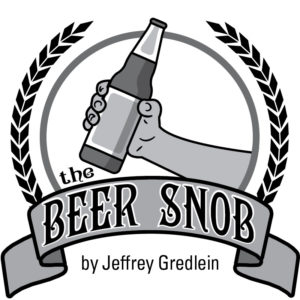A classic American Ale
 Of all the ‘recognized’ beer styles, one of the oddest may be barleywine. Originally created in England in the 18th century as an alternative to wine when supplies of the grape tipple might have been minimal due to inevitable strife with wine-producing countries, the barrel aged beer would have been too expensive to brew on a mass scale, and would only have been enjoyed by the well-heeled set who were lucky enough to boast a family-owned brewery.
Of all the ‘recognized’ beer styles, one of the oddest may be barleywine. Originally created in England in the 18th century as an alternative to wine when supplies of the grape tipple might have been minimal due to inevitable strife with wine-producing countries, the barrel aged beer would have been too expensive to brew on a mass scale, and would only have been enjoyed by the well-heeled set who were lucky enough to boast a family-owned brewery.
Years later, as barleywine began to be brewed on a large scale, the similarities to Old Ale would cause some modern drinkers to question just what the distinction between the two styles might be. Rich, complex, and typically aged, characteristics of both Old Ale and barleywine, the division may lie in the alcoholic strength, barleywine being higher, and malt presence, Old Ale offering more.
A similar note of confusion would enter the American fascination with the “strongest of ales” as most in this country became enamored with hops, and the brewing of standard IPA took on enormous bitterness, eventually becoming double and Imperial India Pale Ale. Examples of American barleywine could easily be confused with the stronger and hoppier adaptation of American IPA, the thin line separating the two styles being crushing hop bitterness of double IPA compared with the noticeable malt backbone of American barleywine.
My relationship with barleywine is a bit odd. In the early days, when few American brewed versions existed, and English options were slightly more numerous but still hard to obtain, barleywine was a highly-prized treat. More recently, things have changed.
While I have enjoyed dozens of English and American barleywines over the years, it’s not a style I often reach for, the alcohol levels reaching the danger zone were one not to share a bottle with friends, and the complexity at times proving overwhelming. Add to this, the general thirst for the beer just isn’t there, and its rare to see examples show up on tap. When they do, most folks who enjoy good beer aren’t looking to sip a 15 percent alcohol by volume (ABV) monster with their pizza. Enter Old Foghorn.
Much has changed since the birth of Anchor Brewing Company’s legendary and likely first post prohibition large-scale produced American barleywine, Old Foghorn. At the time, this nearly 10 percent ABV beer would have been the biggest on the block in strength and taste. Today some seasoned beer drinkers would find it tame, as various brown and amber ales often scale these heights. But respect your elders and revisit San Francisco’s original Strong Ale.
Leaning toward the English style, think toffee and dark fruit notes, of course being a West Coast brewed beer, heady hops will be in play, including heavy amounts of cascade. If it’s possible, Anchor’s barleywine seems simple compared to some of the American behemoths on the market. But I actually prefer it to many of the pretentious and over the top creations of recent years.
Not a term generally attached to the style, Old Foghorn is balanced, but don’t let the harmony fool you into thinking this is some undemanding ale. Anchor’s American barleywine is superb, and easy to like. A perfect sipper on a frigid night, with friends, in front of a fire. Enjoy the brews.














